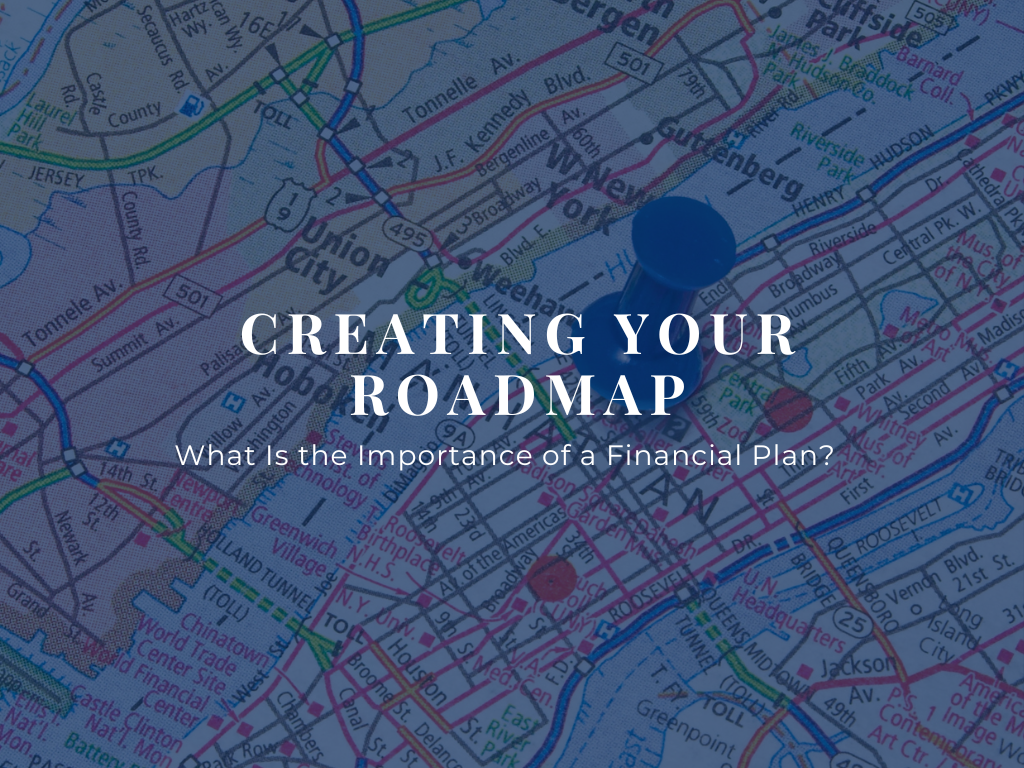A financial plan is a personalized roadmap to help you meet your financial goals. While there’s a long list of reasons why a financial plan is so important these are the top five.
Creating Your Roadmap: What Is the Importance of a Financial Plan?
Topics: Financial Planning
A study from the National Institute on Retirement Security found that 66 percent of millennials haven’t saved any money for retirement – and 66 percent haven’t started saving. With living expenses, student debt, rent or house payments and other daily expenses, saving for retirement is typically not a priority for younger people. But that will make it considerably more difficult for them to have a secure retirement later in life.
The biggest obstacle for millennials’ retirement savings is time itself. Compounding interest allows funds to grow and allows those with even modest savings to establish a large nest egg for later use. If you saved $50 each month in a retirement account that earns 6.5% annually and compounded monthly, you would generate a savings of $226,781 over 50 years. Alternatively, a millennial who starts saving the same amount 30 years later (which would have only 20 years’ worth of compound growth) would net only $24,525. Compounding plays a critical role in retirement savings. Even a little savings every month, like $50, can make a considerable impact.
Topics: Financial Planning
When Should I Meet With a Financial Advisor and How Do I Set That Up?
Wherever you are on your financial journey, there are certain times you may want to meet with a financial advisor for their professional insight and recommendations. Working with a trusted fiduciary advisor can help you plan your future, manage investments and provide guidance on tax preparation, retirement planning, estate planning, insurance, and other important matters. See when and why you should meet with a financial advisor — and how to get started today.
Topics: Financial Planning
Free Financial Planning Tools: 10 No-Cost Resources for You
Planning your finances doesn’t have to be overwhelming or stressful. Sure, there are a lot of key factors to consider, like saving for retirement and planning estimated budgets, but there are plenty of free financial planning tools that you can use as resources to feel more prepared. Here are just eight helpful tools and three financial apps you can access for free:
Topics: Financial Planning
A wide breadth of experience and a grounding in practicality are what make Bill Anderson good at what he does as a Wealth Advisor and Portfolio Manager for Carnegie Investment Counsel. Bill handles all aspects of investment portfolio management and client relationships. He has experience in just about all aspects of the wealth management industry, but also in the wider world, including issues around elder care, employment transition and family dynamics. Bill has a long track record in the wealth management field in Cleveland, Ohio. He also spent 15 years with Progressive Insurance, specializing in financial institution crime and liability insurance.
He earned his bachelor’s degree in business administration in finance and real estate, as well as an MBA in finance from Kent State University. He held the distinction of being the youngest graduate of both programs for several years. Additionally, Bill held the Wall Street Journal Award for the highest GPA in finance.
The Big Picture: Top Elements of a Financial Plan
The great thing about a financial plan is that it’s unique to you and your needs, but this is also what can make creating one so difficult. You’ll want to consider the key components to a strong financial plan, which will include such things as defining your goals and assessing your risk tolerance. While this part of your financial plan will be entirely unique, there are still some essential elements of a financial plan that should be addressed.
Topics: Financial Planning
5 Ways to Build Wealth at Any Age or Stage
Building wealth is an integral step in many major life goals: purchasing a home, limiting financial stress, supporting loved ones, enjoying retirement, the list goes on and on. But building wealth isn’t always straightforward. What if you’re early in your career and just barely managing to make ends meet? What if you’re nearing retirement but don’t feel you’ve saved enough? No matter your age or stage of life, here are five ways to help you build wealth now.
Topics: Financial Planning, Wealth Management
2022 Wealth and Taxes Webinar: Tips to Help Maximize Your Bottom Line
If taxes confuse you, rest assured that you are not alone. We often hear common questions from our clients around RMDs, 529 Plans, rules around charitable gifts, and more. To help demystify these topics, Carnegie Investment Counsel will host a free webinar on Wednesday, February 23rd, at noon.
Speakers:
- A. Christine Bretz, CPA, CFDA of Singer, Berger, Press & Co.
- Bryan R. Blackburn, CFP® of Carnegie Investment Counsel
Topics: Financial Planning, Wealth Management, Taxes
Making decisions today that are designed to take effect upon our eventual demise is hardly at the top of anyone’s pleasure list. When it comes to ensuring the financial well-being of your family though, making thoughtful preparations regarding the final disposition of your assets should be a priority. The creation of an estate plan allows you to control how your assets are transferred to your heirs when you die or become mentally or physically incapacitated.
An estate plan will have far-reaching consequences regarding how your financial assets are distributed. A properly designed plan can also make directives about your medical care if you become too ill to make those decisions yourself.
In the absence of an estate plan, a probate court may be making the decisions about your money when you pass away, rather than following your wishes. The lack of a plan may leave your family with an undue hardship, particularly if you have not made it clear to them how you want your affairs to be managed.
Consider the essential components of a proper estate plan:
Topics: Financial Planning, Wealth Management
Life Events: Reasons to Change Your Will
You’ve got many important documents you keep safe: your Social Security card, your birth certificate, your marriage certificate and, perhaps most important, your will. Though some of these documents can’t be changed, your will can be modified throughout your life so that your estate is handled according to your wishes after your passing. You want to make sure the right people inherit your assets, and those circumstances can change over time in relation to choices and relationships. Here’s a look at some reasons to change your will.
Topics: Financial Planning, Retirement Planning











